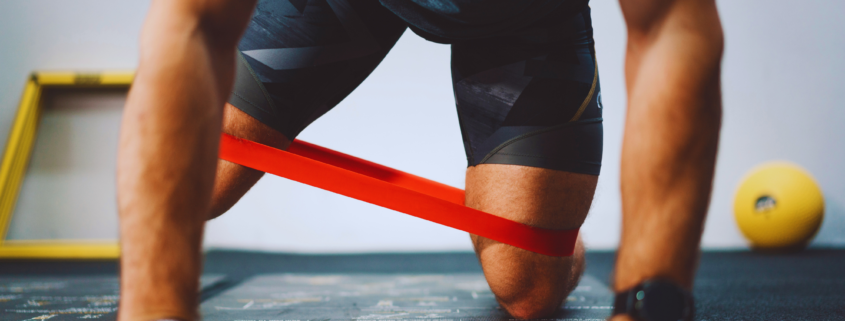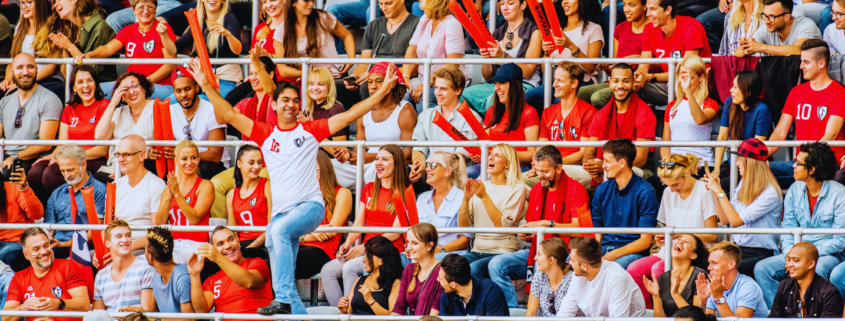During a workout the national league, former scholarship holding Div. 1 NCAA athlete from a championship winning team asked ‘Ian, I notice you don’t use bands with me in any exercises. Why do most strength coaches use bands and you don’t?’
I pondered a moment and then said ‘Because the world is brain dead.’
A bit harsh, but I wanted to get my point across.
Now this athlete is very cerebral and not only deserved a more complete answer, but had a thirst for knowledge. The lack of satisfactory explanations to similar questions posed to their previous strength and conditioning coaches had been a source of frustration.
So I took a deep breath, collected my thoughts, and begun one of those very brief but intense summaries you give to athletes with inquiring minds.
IK: ‘Okay, this is a bit of a longer explanation but you deserve it!…..Let me ask you – what exercises have you mainly used bands on?
Athlete: Oh, things like the exercise you call ‘External leg rotations’, but others call clamshells. Or the external arm rotations. Exercises like that.
IK: Okay, so mostly control drills, a concept I introduced to the world in the 1990s[2] to provide a pre-training activation of the muscles and an injury prevention insurance policy by increasing volume in small muscles.
The stretch should be followed by a series of control drills for the joints and muscles to be trained in the workout. [3] … I include 2-4 low volume/low intensity ‘control’ drills at the start of EVERY workout, aimed at reducing the muscle imbalance in the muscle groups to be trained on that day. This is part of my injury prevention ‘insurance’ policy… [4] Control drills by my definition include any exercises that focus primarily on selective recruitment and quality of the movement, as opposed to the load lifted or reps performed That is, a qualitative focus rather than a quantitative focus…[5]
IK: Let me ask you a question – when you start each rep in most exercsies, do you feel at your strongest point or not?
Athlete: Ah, no, most exercises I am not the strongest at the start of the rep.
IK: And that’s normal – it’s called the ‘strength or force curve’ – the amount of force you can produce at the start of the exercise is usually low, then what happens next?
Athlete: I feel a bit stronger as I come up through the rep.
IK: Excellent. Then what happens next?
Athlete: I feel I get a bit weaker towards the end.
IK: Wow, you are sharp! That’s a great explanation for most joint force curves – you start weak, get stronger, then get weaker. Now let me ask – when you start the rep with a band does the resistance start low?
Athlete: Yes, it’s at its easiest point at the start.
IK: Excellent. Then as you come through the movement what happens to the resistance?
Athlete: It’s get harder.
IK: Excellent. Then what happens next?
Athlete: Then I guess it gets really hard towards the end as the band is getting more stretched.
IK: Exactly! Now is this your strongest point or are you getting weaker towards the end of the movement in most cases?
Athlete: I am usually getting weaker.
IK: Great! So does the resistance offered match the force curve?
Athlete: No, it doesn’t.
IK: Can you finish off the rep with excellent technique or do you tend to cheat to get it done?
Athlete: I need to cheat to finish the rep.
IK: So how does that fit in with say my focus on technique and avoiding technique breakdown, especially with control drills?
Athlete: It wouldn’t! Okay, I see now why you don’t use bands!
With that, we went back to training.
Now I am going to extend the discussion for you, as I assume you are not working out as you read! Now of course I need to state that if you don’t like what I am about to say, you can stop reading. Or, you can read on. Now if you don’t have room in your mind for a different perspective, you can of course just ignore it and go back to doing what everyone else is doing – and we need the 90% to do what the 90% do because that’s just the way it is – or you can throw a tantrum and hurl abuse at me – the comment section is below – go for it, I’m pretty used to those affected with the ‘who moved my cheese’ phenomenon!
So for those still with me, I return to my insights….yes, just an opinion based on a little bit of experience….and a keen innovative mind that no matter how much the trolls are pissed off with me, chances are they are already using one or more of my innovations without even realizing it!
(That reminds me of Minny’s lines in the movie ‘The Help’ – “you just ate my xxxx….”[6])
In the 1960s and 1970s, either through a genuine desire to find a better way or for commercial purposes, some sought a ‘superior’ loading alternative to free weights, earlier referred to as ‘isotonic movements’ – the use of eccentric and concentric contractions with a constant load.
Universal released their lever machines, trademarked ‘Dynamic Variable Resistance’ (DVR), proposing the superior training effect. They failed to truly match the force curve and this fell by the way.
Arthur Jones came along in the 1970s and 1980s with the off-set nautilus cam shell shaped pulley system trademarked Nautilus. Really nice equipment, and the off-set cam pulley system got closer than Universal did to matching the joint force curve, but still fell short.
Arthur and his off-spring continued to contribute to the search for optimal resistance modalities, through Medex, Hammer Strength etc.
Isokinetic and semi-isokinetic devices chimed in, all providing alternatives to isotonic exercises, and variety in training.
So why did was it that took us back about half a century and sees athlete’s around the world using resistance options such as bands where the resistance rises in a linear fashion, arguably even less appropriate to the human force curve than isotonic fixed load resistance?
Now perhaps you have a greater affinity for my initial word selection regarding humans being brain dead? Okay, that may be asking too much!
So why are bands so popular? I have three possible answers.
Firstly they are undeniably convenient and cost effective. However when did training to be the best in your conference, best in the nation, and or the best in the world come down to convenience? In other words I can understand why some general population clientele may resort to them especially on road trips. However I don’t believe this is a solid justification for the proliferation of this resistance mode.
Secondly, they are well marketed. In the post 2001 recession response the US fitness industry market turned it’s attention to smaller devices, devices that not only carried lower risk for the manufacturer, importer, distributor and facility owners, but potentially had a higher percentage margin. The promotion of the concept of ‘functional training’ was not without coincidence, rather suggest driven by a market shift toward small cost equipment. And bands are simply part of this market shift. Suffice to say, the promotion of training methods connected to equipment (e.g. foam rollers, bands etc.) rose, whilst the promotion of training methods sans (devoid of) equipment (e.g. stretching) was suppressed.
Thirdly, I come back to brain dead humans. Humans not wiling or able to use the grey matter they were blessed with. Earl Nightingale in his must –listen-to 1956 audio record ‘The Strangest Secret’[7] quoted the wise Dr. Albert Schweitzer responding to a reporter when asked in a circa 1950 press conference “What’s wrong with men today?” After a brief pause he said, ”The trouble with men today is that they simply don’t think.” Not much has changed I suggest!
In conclusion, yes, there is justification for the use of all resistance modes in various cases. However I suggest the current use of bands is inconsistent with this justification. Whilst I was a bit cheeky with my title ‘ban the band’, I am comfortable suggesting you at least reflect on this resistance option before imposing it upon you trusting clients or athletes.
The challenge is not in knowing what is right and wrong. The challenge is to develop the ability to think, to be able to discern if an exercise or training method is appropriate for any given person at any given time, irrespective of and often despite it’s current popularity. This is my hope for you.
References
[1] You know, the ones who are 10/10 on bravery when they’re posting from their basement whom a psychologist would have a field day seeking to unravel the personal hurt they have suffered in life that leaves them in so much pain they want to pass that pain on to complete strangers
[2] King, I., 1999, Get Buffed! (book), p. 118
[3] King, I., 1999, Get Buffed! (book), p. 118
[4] King, I., 1999, Get Buffed! (book), p. 123
[5] King, I., 2002, Get Buffed! II (book), p. 137
[6] “Minny: “Eat my shit.”
Hilly: “Excuse me?”
Minny: “I said eat…my…shit.”
Hilly: “Have you lost your mind?”
Minny: “No ma’am, but you about to, cause you just did.”
*Minny eyes the pie*
Hilly: “Did…What?”
*Minny eyes pie again, Missus Walters gasping and laughing, Hilly eyes pie then gags and runs off*
Missus Walters: “And you didn’t just eat one, you ate TWO slices!”
*Minny runs off*
Missus Walters: “RUN, MINNY, RUUN!!”
*She says this while laughing*”
[7] https://www.nightingale.com/articles/the-strangest-secret/









